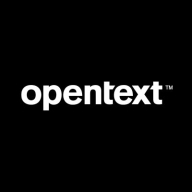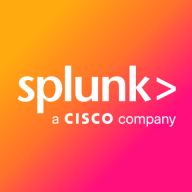

OpenText SiteScope and Splunk AppDynamics both operate in the IT infrastructure monitoring and application performance management sectors. OpenText SiteScope excels in pricing and perceived support, whereas Splunk AppDynamics is preferred for its advanced features that justify its higher cost.
Features: OpenText SiteScope includes extensive monitoring capabilities for servers, applications, and network environments, alongside flexible alerting systems. It offers agentless monitoring and supports multiple virtualization technologies. Splunk AppDynamics provides comprehensive end-to-end visibility and analytics, facilitating quick identification and resolution of performance bottlenecks. It features transaction tracking, deep-dive monitoring, and robust analytics capabilities.
Room for Improvement: OpenText SiteScope could enhance its integration with third-party tools, improve the user interface for better ease of use, and optimize its alerting system for more precise notifications. Splunk AppDynamics would benefit from reducing initial deployment complexity, improving integration with broader ecosystem tools, and lowering the cost of entry for smaller businesses.
Ease of Deployment and Customer Service: OpenText SiteScope offers straightforward deployment processes and robust customer support, ensuring quick setup and reliable problem resolution. Splunk AppDynamics features a cloud-based deployment model with quick scalability and remote management, backed by comprehensive support options. It is valued for its flexibility and advanced remote management capabilities.
Pricing and ROI: OpenText SiteScope is a cost-effective solution with a favorable ROI due to lower setup costs, making it a solid choice for robust monitoring. Splunk AppDynamics, with higher initial costs, delivers substantial ROI through advanced performance insights and application management efficiencies, often seen as more beneficial over time due to its significant performance management advantages.
| Product | Market Share (%) |
|---|---|
| Splunk AppDynamics | 3.6% |
| OpenText SiteScope | 0.7% |
| Other | 95.7% |

| Company Size | Count |
|---|---|
| Small Business | 8 |
| Midsize Enterprise | 4 |
| Large Enterprise | 21 |
| Company Size | Count |
|---|---|
| Small Business | 55 |
| Midsize Enterprise | 36 |
| Large Enterprise | 194 |
OpenText SiteScope is an agentless monitoring program that tracks the availability and performance of distributed IT infrastructures such as servers, network devices and services, applications and application components, virtualization software, operating systems, and other IT enterprise components.
OpenText SiteScope is an autonomous hybrid IT monitoring system that can monitor more than 100 different types of IT components in real time, thanks to a lightweight and highly customizable remote access architecture.
With OpenText SiteScope, IT teams can get the data they need to keep on top of problems and eliminate bottlenecks before they become major concerns.
OpenText SiteScope can reduce total cost of ownership (TCO) by utilizing agentless technology, which eliminates the need to install and monitor agents on each box. Manual activities can be automated, and teams can save time and effort by using pre-packaged solution templates.
OpenText SiteScope Features
OpenText SiteScope has many valuable key features. Some of the most useful ones include:
Splunk AppDynamics enhances application performance monitoring with advanced diagnostics and real-time insights, offering seamless end-to-end transaction tracking and infrastructure visibility.
AppDynamics provides critical tools for businesses to analyze application behavior and performance. Through innovative features like transaction snapshot analysis and adaptable dashboards, users can quickly identify and address issues, ensuring high levels of system uptime and efficiency. It is designed to support complex environments including Kubernetes and AWS, enhancing user experience by detecting performance issues early. Despite needing improvements in network monitoring and integration, it remains a robust option for tracking application health.
What are the key features of AppDynamics?In industries like financial services and e-commerce, AppDynamics facilitates performance tracking across distributed systems, optimizing infrastructure to meet consumer demands. It excels in environments needing precise transaction monitoring and is pivotal in delivering high value and satisfaction.
We monitor all Application Performance Monitoring (APM) and Observability reviews to prevent fraudulent reviews and keep review quality high. We do not post reviews by company employees or direct competitors. We validate each review for authenticity via cross-reference with LinkedIn, and personal follow-up with the reviewer when necessary.